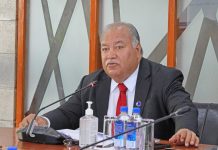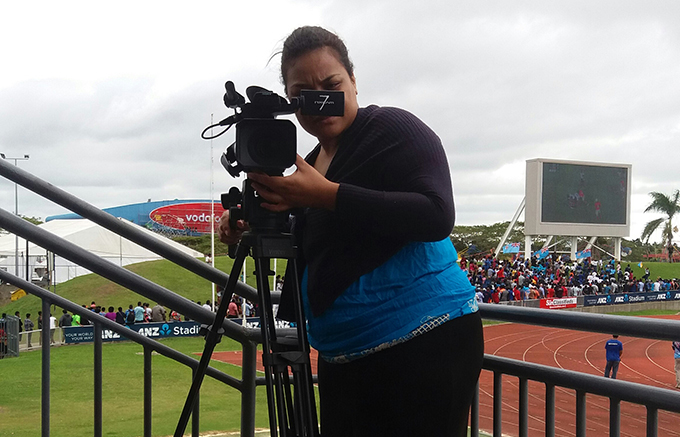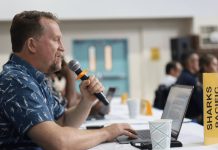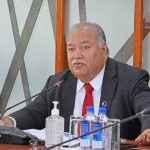By Shailendra B. Singh, Folker Hanusch
While global scholarship on the professional views of journalists has expanded tremendously in recent decades, the Pacific remains a blind spot, with sporadic research at best. For instance, the Pacific was not featured in the Worlds of Journalism study on 76 countries, perhaps the most ambitious undertaking in the field as yet.
The lack of research is a drawback in understanding the state of Pacific media, including the challenges faced by journalists, let alone tackling the issues in a sector that is responsible for providing the public with information on which important decisions are formed.
To address this gap, we conducted a standardised survey of 206 Pacific journalists in nine University of the South Pacific member countries based on questions modeled on the Worlds of Journalism study:
1.What are the demographic profiles of Pacific journalists?
2.What are Pacific journalists’ perceptions of their role?
3.What are Pacific journalists’ views of controversial reporting practices?
4.What are Pacific journalists’ perceptions of influences on their work?
The surveys were conducted between mid-2016 and mid-2018 in the following countries: Cook Islands, Fiji, Marshall Islands, Nauru, Samoa, Solomon Islands, Tonga, Tuvalu and Vanuatu.
The response rate in each country varied between 70% (Solomon Islands) and 100% (Nauru), with an overall response rate of 79%. One-quarter of our respondents worked in a management function (editor-in-chief, managing editor, department head, etc.), while the remainder were non-management staff (producers, reporters, news writers, subeditors, or trainees).
We found that while Pacific journalists are now older, more experienced and better educated than 30 years ago, they are still younger and less-educated than their counterparts internationally. So while Pacific journalism schools appear to be having an impact, and journalist retention rates in the industry are improving, the efforts need to be ongoing. The full findings are published in Pacific Journalism Review.
Our results suggest a marked change from earlier studies in key demographic aspects. The median age of nearly 34 years is significantly higher than the 20-29 years range in previous studies. Closer inspection reveals important differences across the nine countries. The oldest age profiles were found in the Cook Islands (43 years) and Tonga (41 years) and, at an average age of 33 years, Fijian journalists are the youngest. One possible reason is the high turnover of Fijian journalists due to the punitive Fiji Media Industry Development Act.
Pacific journalists are more likely to have been educated at tertiary institutions today, in line with global trends, but at just over 50% with bachelor’s degrees, the region lags well behind Australia and New Zealand (at 80-90%). Samoan and Solomon Islander journalists were the most-educated with 69% and 68% holding at least a bachelor’s degree.
As for gender, the overall figures suggest broad parity, albeit large discrepancies in individual countries. Just as in other parts of the world, however, women are still largely disadvantaged in terms of power within the field. In the Pacific, only four in 10 journalists in a management position were women.
Past studies have noted that, faced with limitations on media freedom, journalists display a mix of watchdog ideals and developmental goals. Our results support this assumption.
The most popular roles chosen by survey respondents included being an ‘adversary of government’, and to ‘promote tolerance, cultural diversity and social change’ – with the latter falling in the realm of development journalism. However, ‘support national development’ received relatively little support, with respondents favouring a typically Western standpoint of ‘detached observer’ role.
When asked about using classified business or government documents, only around half the respondents did not approve of this practice under any circumstances. This is still considerably higher than the global average in the Worlds of Journalism study. Among our respondents, only 9% said it was ‘always justified’ to use confidential information, and 40% said it was justified on occasion, compared to 93% of New Zealand journalists who said it was acceptable.
Our findings support the argument that such investigative techniques were generally more accepted in the Global North, as part of journalism’s monitorial role, than the Global South Pacific. Even the second-least controversial practice – using hidden microphones or cameras – was approved by only around 40% of our respondents, compared to 66% globally.
Regarding perceived influences, our findings confirm previous research that those influences which journalists experience most directly are the ones they see as most influential. Hence, journalists feel that procedural and organisational influences – such as deadlines, media laws, access to information and editorial policy – have the most impact on their work. This is followed by economic influences that tend to interact with organisational pressures.
In contrast to the global average, Pacific journalists placed political pressures higher than personal network influences. This is indicative of the stronger role that governments play in Pacific journalism. Samoan journalists are far more likely to perceive pressure from political sources than those in the Cook Islands and Tonga.
Across the Pacific, journalists identify strongly with the role of holding power to account, mixed with views that support a developmental role. While they want to be watchdogs, the political realities of their work – as shown through their risk-averse views on the acceptability of various reporting practices, as well as perceived influences on their work – make this a difficult exercise. In many situations, Pacific governments still hinder the press in this crucial fourth estate role….
SOURCE: DEVPOLICY.ORG/PACNEWS


















